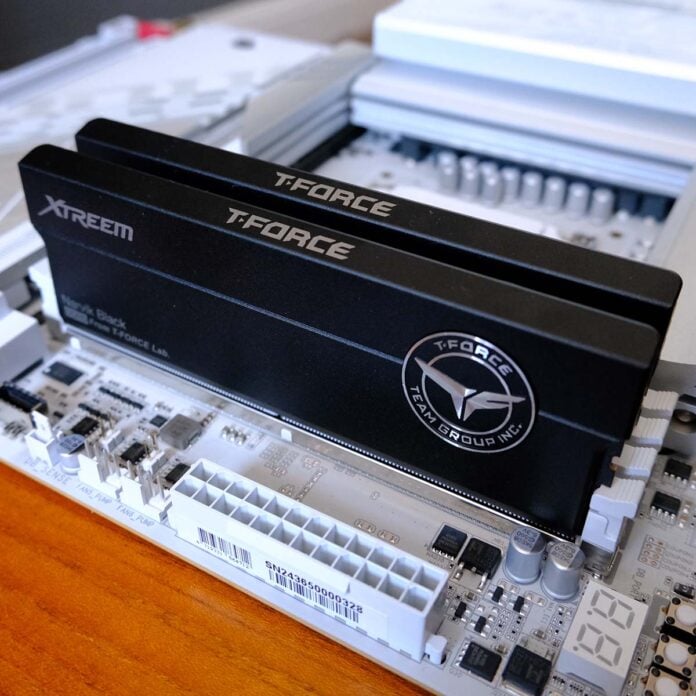The march towards ever-higher memory speeds necessitates a new approach to memory, as CUDIMM models like T-Force Xtreem CKD DDR5 kickstart this new era. While such DDR5 kits will predominantly interest enthusiasts in the short term, there’s plenty for all of us to get excited about in the long term.
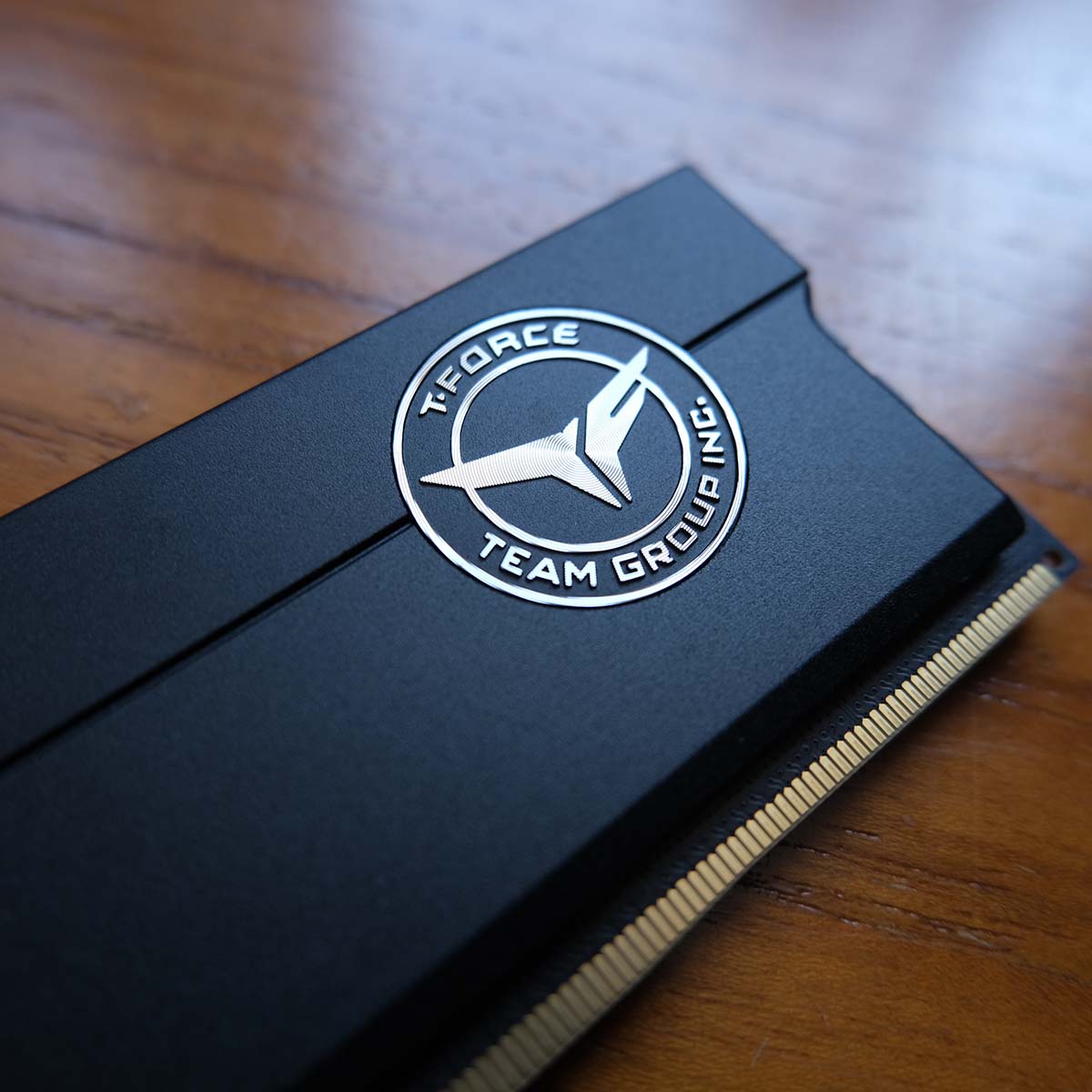

TeamGroup T-Force Xtreem CKD DDR5-8800 CL42 48GB
£290 / $320
Pros
- Spectacular speed
- Two XMP profiles
- Single-rank DIMMs
- Inexpensive for CUDIMM
- Lifetime warranty
Cons
- No Intel 200S Boost
Club386 may earn an affiliate commission when you purchase products through links on our site.
How we test and review products.
For the uninitiated, T-Force Xtreem CKD DDR5 is part of a relatively new breed of RAM, dubbed CUDIMM. From the outside, these sticks appear identical to UDIMMs you’ll find in the vasty majority of systems. Under the surface, though, lies an all-important differentiator: a client clock driver (CKD).
This CKD is what allows the likes of T-Force Xtreem CKD DDR5 to reliably run at such high speeds, in this case up to 8,800MT/s. The on-board chip effectively serves as a data buffer, redriving the memory clock, stabilising signal integrity.
It’s not a matter of if, but when, you grab some CUDIMM RAM. So, what kind of benefits can you expect if you jump on the hype train today?
Specifications
Now we’re all caught up on CUDIMMs, let’s talk T-Force Xtreem CKD DDR5 specifications.
| 8,800MT/s | 8,400MT/s | |
|---|---|---|
| Capacity | 48GB (2x24GB) | 48GB (2x24GB) |
| Latency | CL42-54-54-96 | CL42-54-54-84 |
| Voltage | 1.45V | 1.40V |
| Chipset compatibility | Intel 800 Series | Intel 800 Series |
| Dimensions | 48.8 (H) x 134.5 (L) x 8.2 (W) mm | 48.8 (H) x 134.5 (L) x 8.2 (W) mm |
| Warranty | Lifetime | Lifetime |
TeamGroup offers T-Force Xtreem CKD DDR5 in 24GB single-rank kits of two, for a total capacity of 48GB. Timings clock in at CL42, typical for the available speeds.
XMP frequencies start at 8,400MT/s, with a voltage of 1.40V. However, T-Force Xtreem CKD DDR5 can go further, with speeds up to 8,800MT/s (and even 9,466MT/s via a separate profile) albeit with higher power consumption of 1.45V.
The 8,800MT/s model, subject of this review, unfortunately forgoes compatibility with Intel 200S Boost owing to five too many hundredths of a volt. For those in search of support for that feature, turn your attention to the less power-hungry albeit slower 8,400MT/s sibling.
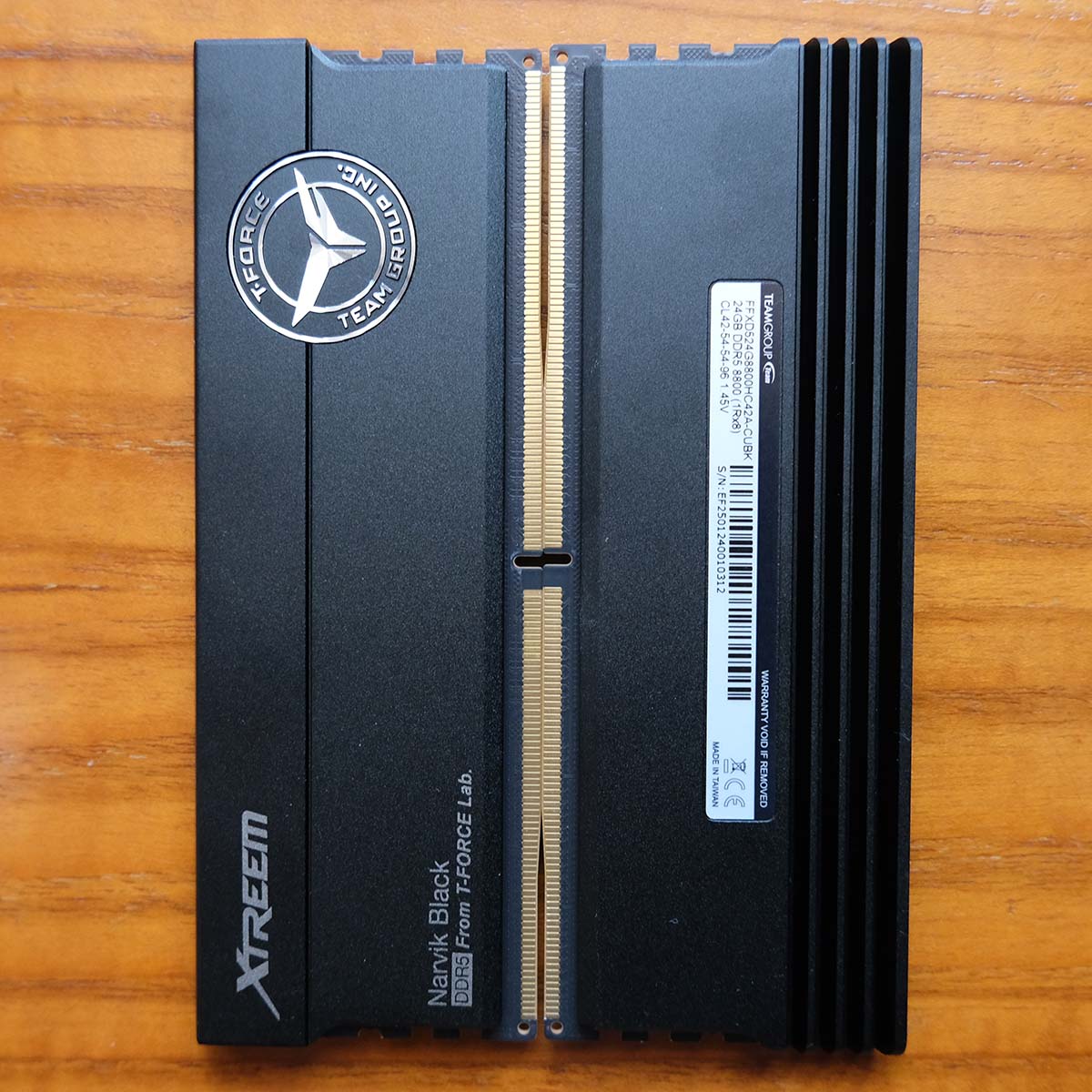
Running at such frequencies and voltages naturally pushes temperatures upward, but TeamGroup equips T-Force Xtreem CKD DDR5 with 2mm aluminium heatsinks that keeps the memory running as cool as it looks. Seriously, this is some classy heat spreader design right here that I’d love to see in other colours beyond this nonetheless stylish Narvik Black colourway.
Premium-looking as T-Force Xtreem CKD DDR5 are, they are quite large. At 48.8mm high, their profile almost intrudes on the clearance of my cooler (Noctua NH-D15 chromax.black). This problem should only affect select coolers, but no one wants to be caught short, figuratively or in this case literally.
While TeamGroup can’t protect you or T-Force Xtreem CKD DDR5 from space constraints, the manufacturer offers a lifetime warranty for each stick. Just hold on to that receipt and you have a perpetually protected purchase.
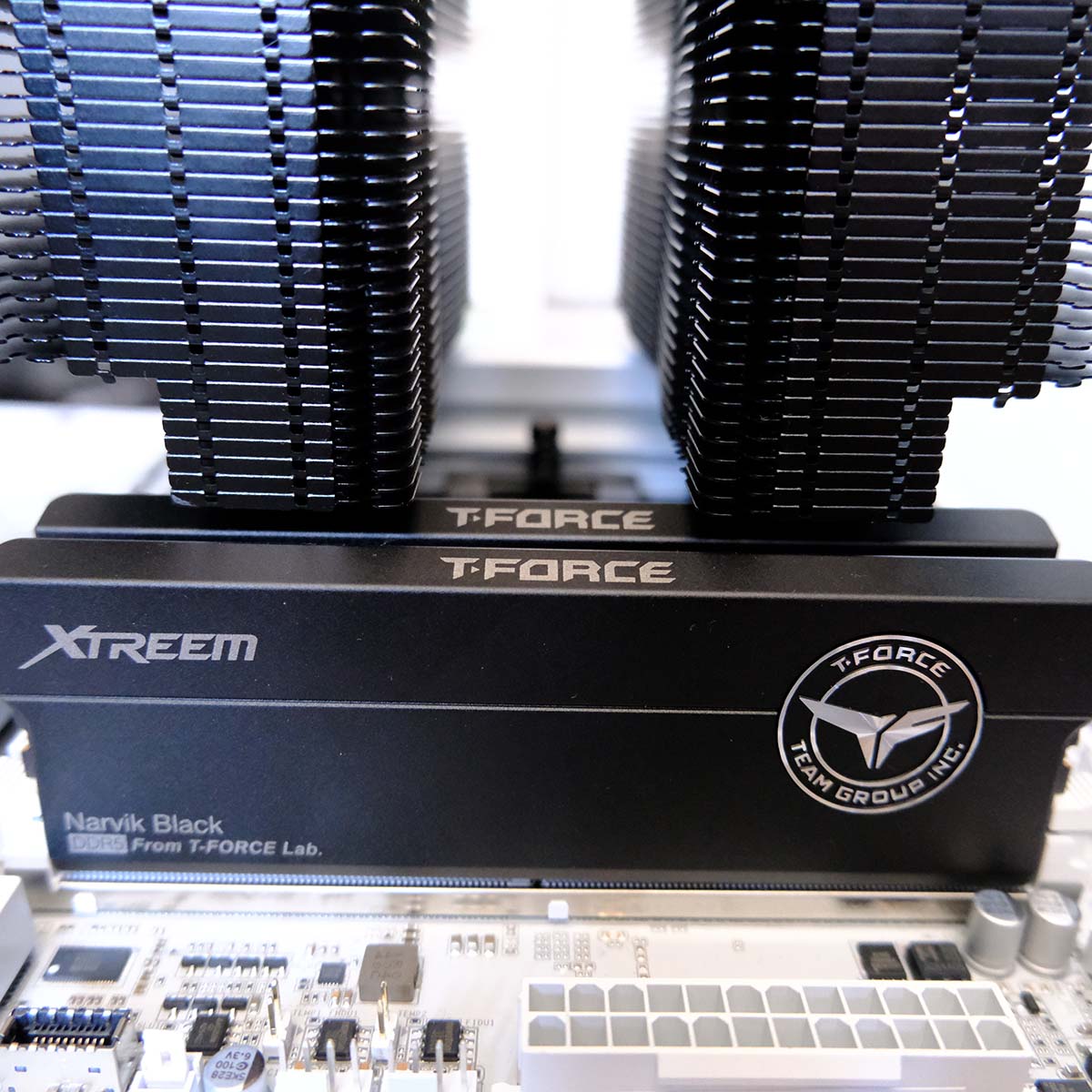
Retailing for £290 / $320, T-Force Xtreem CKD DDR5 is markedly cheaper than competitors with similar specs. For context, a comparable Kingston Fury kit will set you back £356 / $383 while a close Corsair Vengeance alternative costs even more at £370 / $408.
This makes TeamGroup’s offering relatively inexpensive in the CUDIMM market. Nonetheless, these memory sticks remain far more costly than their UDIMM cousins. The question of value comes down to how much you’ll benefit from reliably higher operating frequencies.
Performance
In order to test my T-Force Xtreem CKD DDR5 kit, I’ve put together an Intel Z890 build. This is a necessity, as AMD is yet to enable proper AM5 support for CUDIMM, despite the platform meeting all requirements to do so.
You can get CUDIMM RAM to work on some AM5 motherboards, with a Ryzen 8000 or 9000 Series processor in tow. However, such memory will run in ‘bypass mode’, ignoring the CKD and rendering one of the core benefits of the format moot.
With the above in mind, here are the specifications of the test system:
- CPU: Intel Core Ultra 9 285K
- Cooler: Noctua NH-D15 chromax.black
- Motherboard: Gigabyte Z890 Aorus Pro Ice
- GPU: Nvidia GeForce RTX 5090 Founders Edition
- SSD: WD_Black SN8100 2TB
- PSU: be quiet! Dark Power 13 1,000W
Running alongside a flagship processor and graphics card, T-Force Xtreem CKD DDR5 couldn’t ask for more room to spread their proverbial wings. Before we dive into my results, though, I must address the lack of test data for the XMP 2 profile.
Simply put, our test system refuses to boot using XMP 2. At the time of writing, only a select few motherboards such as MSI MEG Z890 Unify-X are compatible with the RAM running at such speed.
Regardless, we have JEDEC (6,400MT/s, CL52) and XMP 1 (8,800MT/s, CL42) performance to compare. Let’s get to it.
Apps
Like all RAM, T-Force Xtreem CKD DDR5 makes the biggest difference to system performance in professional workloads. While single-core processes will see some improvement, adopting higher frequencies and tighter timings proves a massive boon for multi-core.
| 6400MT/s (CL52) | 8800MT/s (CL42) | Improvement | |
|---|---|---|---|
| 7-zip | 169,543MIPS | 190,989MIPS | 13% |
| AIDA Read | 82.74GB/s | 128.46GB/s | 55% |
| AIDA Write | 75.08GB/s | 97.64GB/s | 30% |
| AIDA Copy | 78.09GB/s | 111.35GB/s | 43% |
| AIDA Latency | 102.0ns | 91.3ns | 10% |
| Blender | 546spm | 571spm | 5% |
| Cinebench 24 ST | 139pts | 145pts | 4% |
| Cinebench 24 MT | 2,268pts | 2,396pts | 6% |
| Geekbench AI Quant. | 16,889pts | 17,196pts | 2% |
| Geekbench 6 ST | 3,256pts | 3,314pts | 2% |
| Geekbench 6 MT | 20,859pts | 23,137pts | 11% |
| y-cruncher | 123.558s | 106.432s | 16% |
I don’t think I’ve ever seen scores in AIDA64 reach such heights before. Read and write speeds respectively rise by an impressive 55% and 43%, switching from up from stock (6,400MT/s, CL52) to XMP 1 (8,800MT/s CL42). Latency is lower but remains high, but this is an unavoidable consequence of Arrow Lake’s memory controller design.
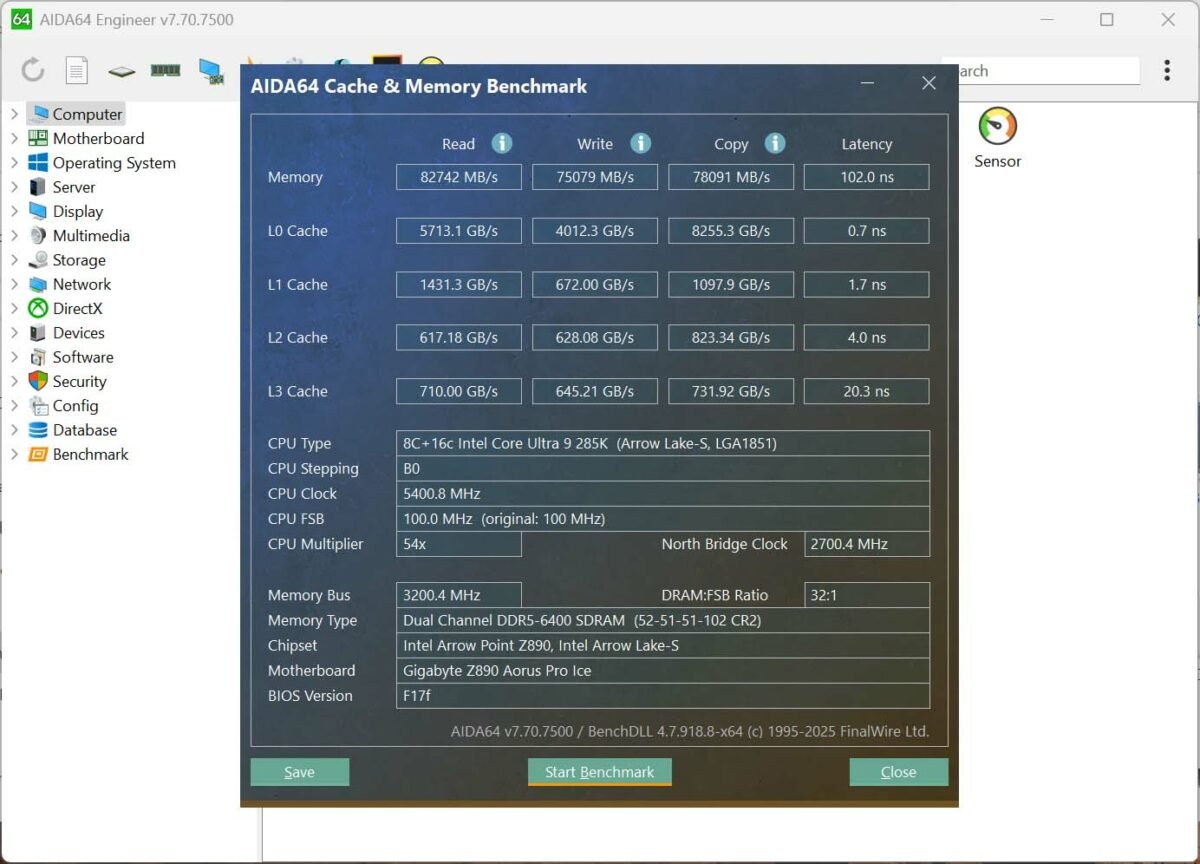
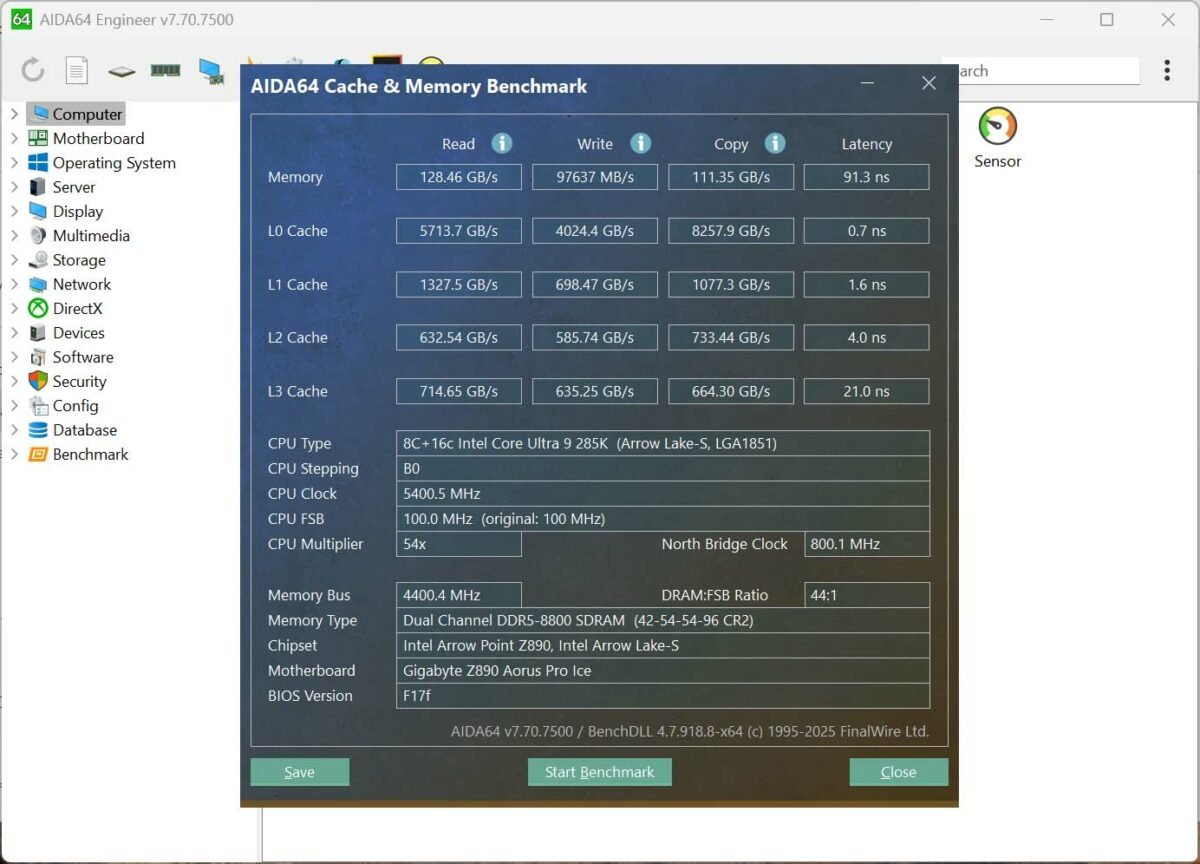
Rocking faster memory gives the processor’s integrated graphics a small boost too. In Blender, samples per minute see a 5% rise.
As alluded to earlier, both Cinebench 2024 and Geekbench 6 see greater increases in multi-core performance than single-core. More specifically, Core Ultra 9 285K firing on all cylinders sees scores improve by 6-11% while single-threaded benchmark results only enjoy a 2-4% uptick.
Gaming
A rising tide lifts all boats, as gaming performance also improves thanks to T-Force Xtreem CKD DDR5’s blinding speeds. Timing improvements are at play in the frame rates above too, and remain key to boosting both minimum and average fps.
| 6400MT/s (CL52) | 8800MT/s (CL42) | Improvement | |
|---|---|---|---|
| 3DMark Time Spy | 37,207pts | 38,292pts | 3% |
| Cyberpunk 2077 | 110fps / 132fps | 121fps / 142fps | 10% / 8% |
| Rainbow Six Siege X | 374fps / 473fps | 379fps / 483fps | 1% / 2% |
| Total War: Warhammer III | 88fps / 118fps | 99fps / 128fps | 13% / 8% |
Toggling XMP 1, the system’s Time Spy scores improve by a welcome 3%. While the majority of this increase stems from a higher CPU score, the extra headroom also affords GPU points to rise slightly as well.
While I’d usually crank Cyberpunk 2077 to max with the game’s path tracing preset, I’ve dropped down to RT Ultra in order to trim the GPU bottleneck. Doing so reveals that XMP 1 provides an 8% boost to average frame rate but minimum relishes an even better 10% increase.
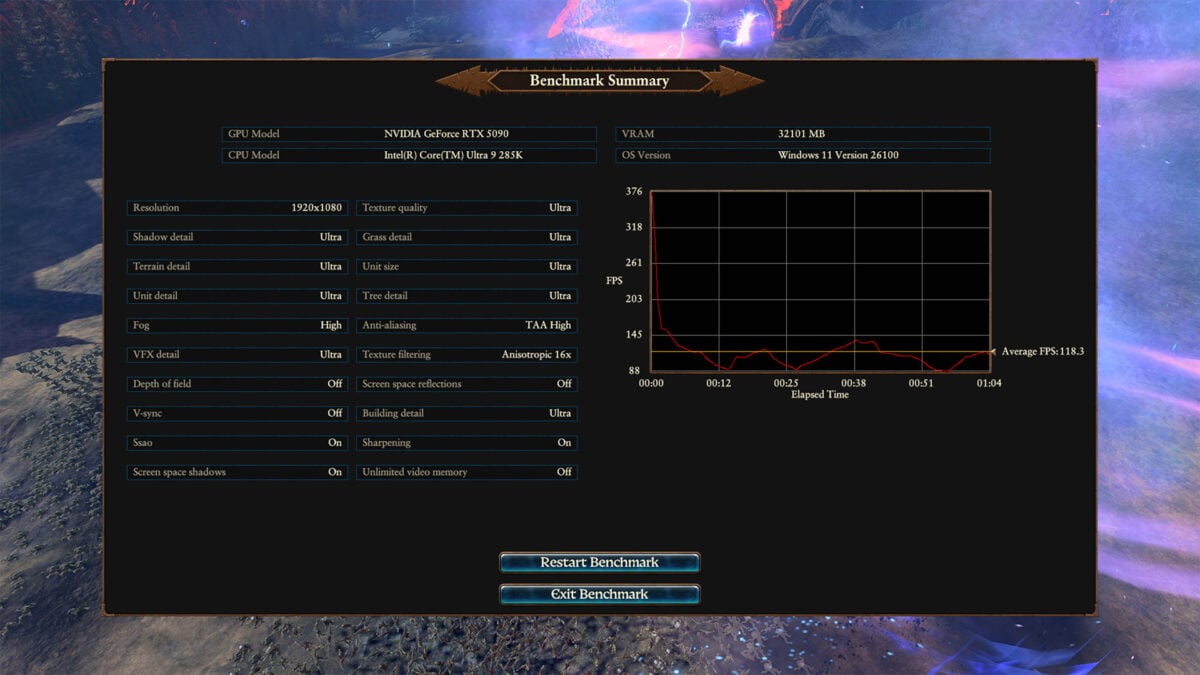
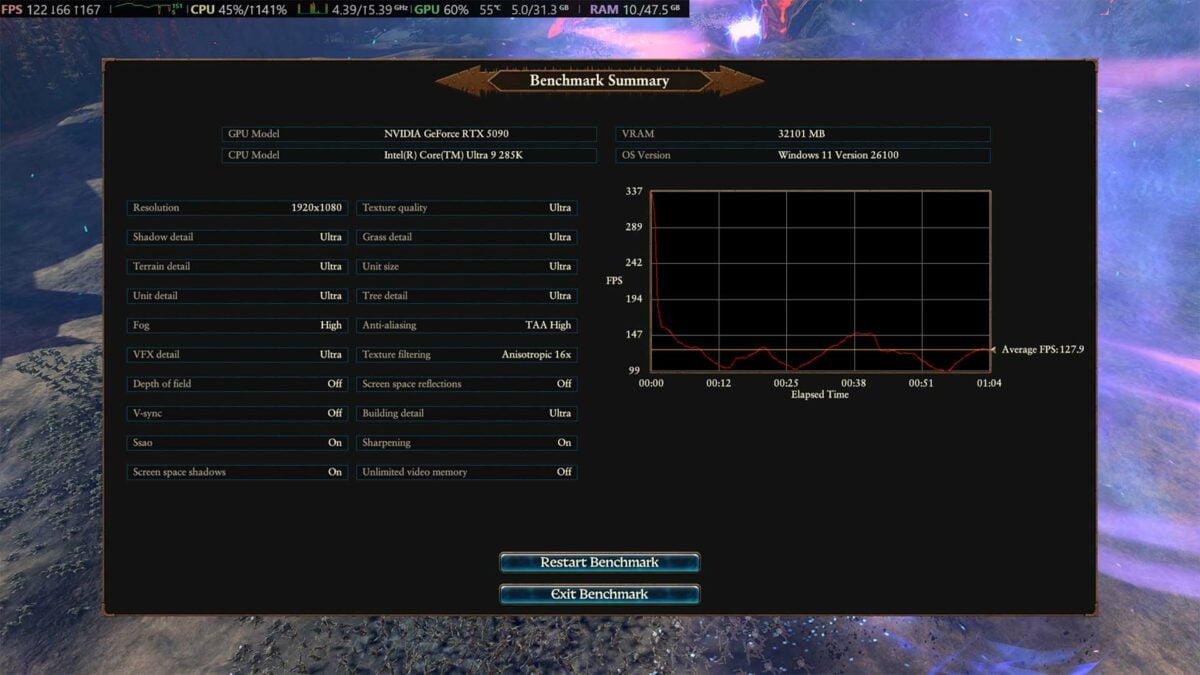
Much as GeForce RTX 5090 is happy to run esports games like Rainbow Six Siege X at close-to-500fps, the graphics card needs a system’s processor to keep pace. Stock performance in this case is plenty, but switching to 8,800MT/s and CL42 timings squeeze out 1-2% extra frames per second.
Lastly, strategy games such as Total War: Warhammer III will happily soak up all the cores a CPU has to offer. Remembering the multi-core gains T-Force Xtreem CKD DDR5 provided in applications, it should come as no surprise that this title sees the biggest improvement of 8-13%.
Conclusion
T-Force Xtreem CKD DDR5 makes the benefits of CUDIMM modules plain for all to see, reliably pushing memory performance to new heights to the benefit of processors. Better still, this 48GB CL42 kit is one of the more-affordable ways to get your hands on what will undoubtedly become the new norm.
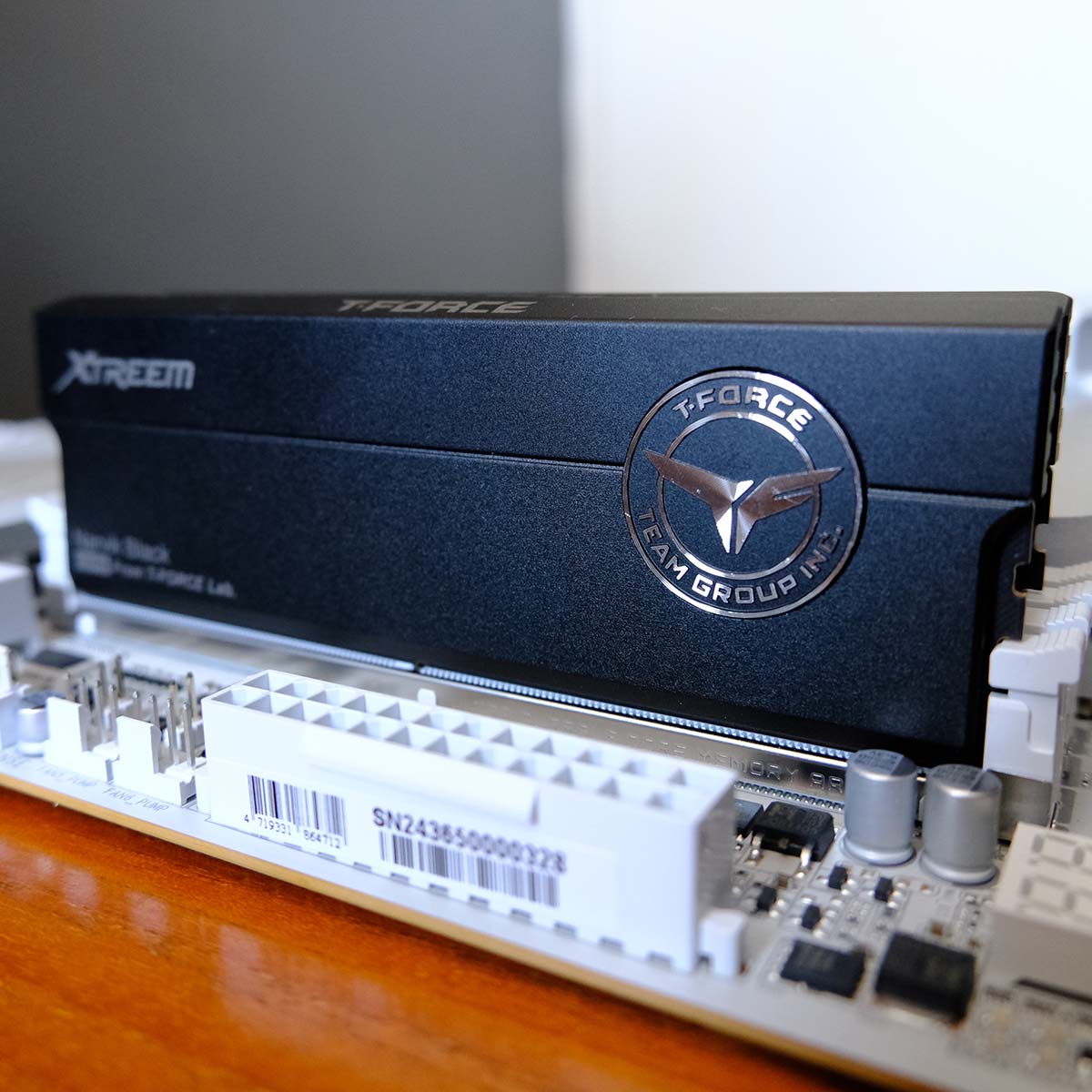
For the moment, purchasing T-Force Xtreem CKD DDR5 only makes sense if you have a current generation Intel processor to pair the sticks to. That isn’t the fault of TeamGroup, of course, but does limit the appeal of these otherwise splendid sticks.
I’m curious how Core Ultra 9 285K scales with the 8,400MT/s variant, particularly with Core 200S Boost. Even without that knowledge to hand, though, I can still confidently recommend T-Force Xtreem CKD DDR5 to anyone wanting to push Intel’s latest chips that extra mile.


